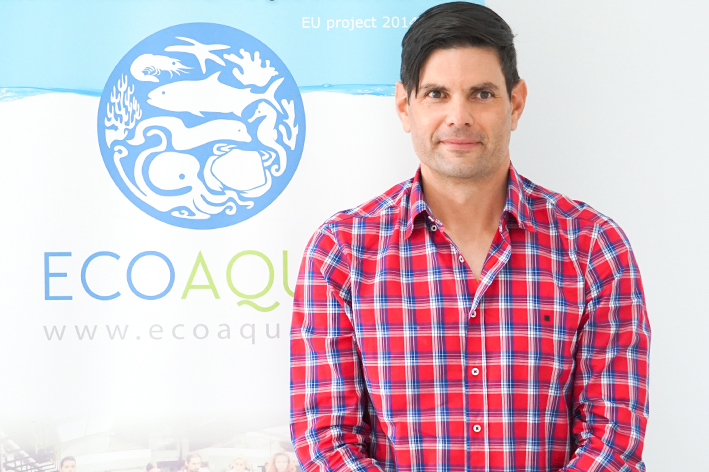Rodrigo Riera, from the ECOAQUA Institute, signs this work together with experts from Madeiran institutions
Rodrigo Riera, professor and researcher at the ULPGC and member of the Institute for Research in Sustainable Aquaculture and Marine Ecosystems (ECOAQUA), signs in the Journal of Nature Conservation an article entitled "A baseline for prioritizing the conservation of the threatened seagrass Cymodocea nodosa in the oceanic archipelago of Madeira", together with Claudia Riveiro, from the Oceanic Observatory of Madeira, Pedro Neves, from the Centro de Ciências do Mar, Manfred Kaufmann, from the Instituto das Florestas e Conservaçao da Naturaleza, and Ricardo Aráujo, from the University of Madeira.

PhD Rodrigo Riera Elena
In this work, the researchers compile the available information on the marine phanerogam Cymodocea nodosa (in the Canary Islands, known as “seba”), a seagrass that grows rooted in sandy or muddy seabeds, which are used as habitat for numerous animal and plant species, from algae to crustaceans, and as a safe space against predators of fry and juvenile species of fish typical of rocky seabeds.
Dr. Riera explains that "we have taken advantage of the extensive experience in the study of Cymodocea nodosa from data collected in the Canary Islands, with special reference to the work led from our research group BIOCON, also belonging to ECOAQUA, by Professor Fernando Tuya".
All historical references and the most recent scientific information were also analyzed in order to know the state of this underwater plant in Madeira's waters and, from there, to propose a series of actions to preserve the few meadows that exist and, at the same time, to support its settlement in those coastal areas that present suitable conditions in this archipelago.
In conclusion, this is a work that aims to establish, for the first time, the starting points for carrying out integrated conservation of this seagrass in the study area. The Journal for Nature Conservation is extensively known in the scientific community for its contributions in the field of ecology and biodiversity conservation.


